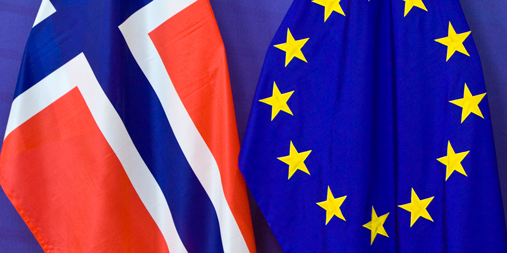The claims are made by Jarle Trondal and Anne Elizabeth Stie in the Norwegian academic journal Nytt Norsk Tidsskrift. They have analyzed Norwegian European policy and academic literature over the last 20 years.
– There is a discrepancy between the willingness and ability of Norway’s European policy, Trondal and Stie say.
There is in fact a broad party-political consensus that the European policy should be ‘active’. But what does this mean in practice? Does Norway have the possibility to pursue an active policy towards the EU? Has the establishment of Norway’s first Europe Minister made any difference?
Not much, according to the researchers. In their view, Norway’s European policy is Sisyphean labour, which can only be made more or less demanding. Efforts are futile due to Norway’s peculiar EU affiliation, which leads to administrative domination.
The absence of politics

The European Economic Area (EEA) Agreement and the other 73 agreements with the EU grant Norway access to the EU system, but only at the public administration level. There is an in-built asymmetry in the EEA Agreement, as Norway is formally not connected either to the Council or the European Parliament, the EU's two legislative bodies. This is where policies are shaped.
The Norwegian central administration on its part is ensured a certain contact with the European Commission, primarily in preparatory expert committees. This is where the specific details of new laws and regulations are worked out. But studies show that Norwegian civil servants do not operate as national representatives. They receive few if any guidelines from the head of ministry and participate mainly as independent experts. The collaboration between Norwegian ministries and the Commission has led to administrative domination and fragmentation in EU/EEA/Schengen work, according to the researchers.
– The role of the Prime Minister’s Office (PMO) and the Ministry of Foreign Affairs (MFA) is limited. Norway’s form of affiliation primarily mobilizes the administration, Trondal says. He is professor at ARENA Centre for European Studies, University of Oslo, and the University of Agder.
– MFA is in fact more of a ‘mailbox’ between Norwegian EU administration and the Commission.
Greater need for coordination
Since 1994 and the signing of the EEA Agreement lot has happened in the EU. The number of member countries has almost doubled. The Parliament and other EU bodies have gained more influence. EU agencies and directorates have been established and has made the EU’s executive power more fragmented. The pillar structure is abolished.
– Another significant feature is that the EU is increasingly adopting sectoral law packages, Trondal explains. For Norway the situation is becoming more complicated as it is more difficult to determine which parts of the packages are relevant for Norway’s current agreements.
– Promoting Norwegian interests therefore requires greater attention and coordination from the Norwegian side, he notes.
Every Norwegian government in the past 20 years has highlighted the aim of pursuing an active European policy. Trondal and Stie however suggest that ‘the political leadership largely abdicated in its enforcement of Norwegian EU policy’ prior to establishing the new post of a Europe minister.
Greater scope of action with a Europe minister?
The current Solberg Government introduced a new post; a minister responsible for the coordination of EU/EEA affairs. In substance, this does not really represent anything new, Trondal and Stie claim.

The role of the new Europe minister is limited by the PMO’s weak role in coordinating sectoral ministries in their EU/EEA/Schengen work. This is partly due to the lack of representation in the European Council (EU’s highest political organ of the Heads of state or government). One cannot compensate for this by increasing the PMO's administrative capacity, according to the researchers.
The current government however introduced another change which is potentially more important: a new EU committee at the government level. The objective is to ensure better coordination in politically important matters. Individual ministers are committed to collaborate to ensure that Norway is speaking with one voice in the EU.
The authors emphasize that these changes are proofs of a desire to ‘bring back politics’.
– However, Norway’s EU affiliation and the way in which the Norwegian EU administration puts the agreements into practice, gives us reason to assume that the country's EU policy cannot truly be active.
PR tricks with symbolic overtones
– In practice, an active European policy is more about making up for the consequences of not having access to the EU’s decision-making arenas by finding alternative channels of information and dialogue with the EU system, than about a long-term strategy to influence the EU's political agenda, Trondal and Stie conclude.
– Norway’s European policy ends up being an action plan to exploit instruments in the best possible manner and to optimize limited opportunities.
They question the realism in the goal of pursuing an active European policy.
– We observe a relatively active EU administration where the political leadership operates at an arm's length. Is the governments’ talk about an active European policy an expression of speaking against better judgement? Or are we observing a classic example of a deliberate decoupling of political talk and administrative practice?
